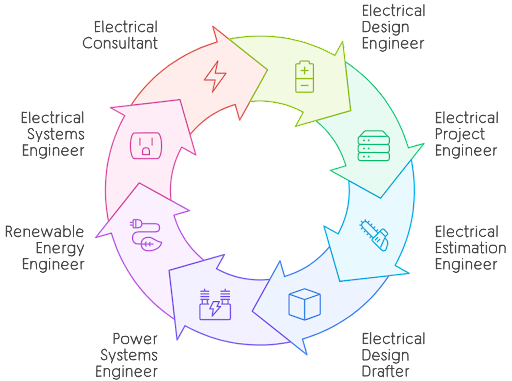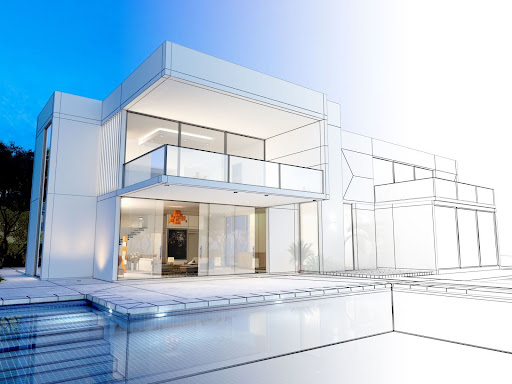- Home
- >
- Courses
- >
- Electrical
Electrical Design Course in Chennai – Practical Electrical CAD & MEP Training
Learn in English & தமிழ்
ACTMEP, a trusted electrical training institute in Chennai, offers a comprehensive Electrical Design Course in Chennai designed to convert engineering graduates and working professionals into job-ready electrical design engineers.
Learn in English, हिंदी, ಕನ್ನಡ, తెలుగు, தமிழ்
Format
Live Online Classes + Offline Classes
Certificates
Industry Recognized Certificate
Duration
3 Months with Internship
Course
3 Year access to recorded videos
Why Choose ACTMEP — Best Electrical Design Institute in Chennai
At ACTMEP we emphasize practical electrical system design training and industry-aligned outcomes. Our electrical CAD training in Chennai combines live instruction, project work, and mentorship so you can confidently handle electrical load calculation, wiring design, and power distribution for residential, commercial, and industrial projects.
Top Companies Hiring Electrical Design Engineers







Discover the benefits of Electrical Design Course
Electrical Design is a stable field with infinite growth. With a certified Electrical Design course in Chennai, you will learn all the Electrical Design concepts, software’s, industrial trends, and more in a structured way. The expert mentoring and practical training will bring you significantly closer to your ideal profession.
ACTMEP will equip you with the required skill set and hands-on experience to compete for top professional positions with a potential to earn salaries starting from ₹3 to 5 Lakhs.
Course Eligibility
- Working professionals seeking upskilling
- Fresh EEE graduates (B.Tech / BE) and diploma EEE holders
- Engineers aiming for roles in MEP consulting, construction, and power sectors
Opportunities for Electrical Design Engineering professionals in India
Increase in electrical design engineer jobs in India, as per a report by Nasscom
next 5 years is 15%
The average starting salary of a fresh electrical design engineer graduate in India is
₹300k - ₹500k LPA
Glassdoor
Payscale
High Demand Across Domains
Construction
Energy
Technology
Manufacturing
Why Learn Electrical Design Course?
- 1 year access to course recordings
- Learn in English & हिंदी, ಕನ್ನಡ, తెలుగు, தமிழ்
- Mentor-led instant doubt clearing
- Personalized feedback on assignments
- Live Online Classes + Offline ( Classroom Courses)
- 100% Job placement support
- Work on real-life paid Project
- Designed for fresh Graduates & Working Professionals
Electrical - Target Job Role


Explore our Electrical Design Course Syllabus
Leading industry professionals created this program especially for you in order to help you develop your skills in electrical design, drafting, and project management, all of which can help you land a high-paying job.
Course Modules
- Basics of Electrical power system
- Over view of Generation Transmission and Distribution System
- Power transmission fundamentals
- Why electrical in MEP Design?
- Standards – NBC,IEC,IS,NEC,DEWA,ADEWA,NEMA.
- Introduction to architectural Layouts
- Different types of false ceiling
- Work plane
- Brief introduction to elevation view
- Introduction to lighting system
- Lamps and luminaries types
- Concepts of lighting design
- Selection of lux for lighting design
- Room index calculation
- Calculating COU for lighting design
- Manual calculation for interior lighting
- Manual calculation for exterior lighting
- Manual calculation for emergency lighting
- Practical example on lighting design
- Introduction to RELUX software
- Step by step Importing AutoCAD file to RELUX
- Creating scenes for interior lighting design
- Editing project scenes in RELUX software
- Selection of luminaries
- Calculating number of luminaries using RELUX software
- Exporting from RELUX to autocad 2D
- Exporting from RELUX to excel
- Practical example on RELUX interior lighting design
- Introduction to exterior lighting
- Selection of luminaire for exterior lighting
- Basics of street lighting design
- Introduction to DIALUX software
- Difference between RELUX and DIALUX
- First lighting system design
- Second lighting system design
- DIALUX bathroom design
- Emergency lighting design
- Interior lighting design using blue icon in DIALUX
- Practical example on DIALUX software
- Selection of luminaire for exterior lighting in DIALUX
- Basics of street light design
- Basics of playground lighting
- Playground lighting design
- To estimate the total connected load(w or kw)
- To calculate the total demand(w or kw)
- Diversity factor calculation
- Applying for approval to service provider(BESCOM,TNEB,BRPL & more)
- Thumb rule calculation
- Power flow from distribution to appliances
- Importance of circuits
- Circuit types
- Light circuit design
- Power circuit design
- Importance of phase distribution
- When to select single phase and three phase system
- Load distribution to each phase
- Balancing 3 phases
- Introduction to Circuit Breakers
- Properties and Types of Circuit Breakers
- Difference between circuit breakers and isolators
- Circuit breaker selection
- Power system design with ELCB
- Short circuit current calculation
- Introduction to panel boards
- Panel board wiring
- Selection of panel board
- Types of panel boards
- Panel board sizing
- Introduction to wires and cables
- Types of cables
- Difference between cables and wires
- Selection of cables
- De-rating current calculation
- Cable sizing
- Bus bar sizing
- Selection of cable insulation
- Voltage drop calculation(VD)
- Conduit types
- Conduit sizing
- Calculating with spacing factor
- Different types of cable tray
- Cable tray sizing
- Trench design
- Brief introduction to transformers
- Types of transformers
- Types of transformer connection
- Transformer sizing (kva)
- HT yard design
- Need for a DG
- Working of DG
- Synchronizing DG to Power System
- DG Sizing methods
- Calculating diesel requirement
- Diesel tank sizing
- Why power factor to be improved?
- Difference between reactive power and real power
- Need for reactive power
- Capacitor bank sizing
- Implementation of capacitor bank
- Need for earthing in power system
- Types of earthing
- Earthing pit designing
- Earthing system design
- Earthing cable sizing
- To calculate the total coverage area
- Materials used for lightning protection
- Lightning protection design
- Lightning arrestor calculation
- Termination of lightning protection
- Introduction to solar Energy
- Advantages and disadvantages of PV cells
- Can I install solar panels by myself?
- Off-grid solar system
- Determine power consumption demand load
- Sizing the PV modules
- Inverter sizing
- Battery sizing using DOD values
- Solar charger controller sizing
- Short circuit current calculation
- Voltage drop calculation
- Need for an UPS
- Synchronizing UPS with power system
- Inverter sizing
- Battery sizing
- ATS system
- MTS System
- Tap changers
Course Modules
- Introduction and area calculation
- Main walls and Partition walls
- Stair case
- Doors and Hinges
- Dimensions
- Elevation view and section views
- Plotting
- Introduction
- Legends creation – part 1
- Legends creation – part 2
- Legends creation – part 3
- Legends creation – exercise
- Light sockets
- Power sockets
- Ceiling fans
- Exhaust fans
- Air Conditioner points
- Drafting light circuit layouts
- Drafting power circuit layouts
- Light and power circuit routing
- Cable tray routing
- Conduits routing
- Supports for conduits and cable tray
- Panel creation
- Enclosures and name plates
- Inserting panel boars to project
- Creation of horizontal conductors
- Creation of vertical conductors
- Creating grids
- Down comers
- Earthing pit design
- Creating pipes
- Creating the arc offsets
- Filleting
- Trimming
- Join
- Scaling the project
- Plot method 1
- Plot method 2
- Exporting project to different formats
- Editing the title block
- Adding tables
- Adding legends
Projects you’ll work on

Designing A Residential Villa with Documentation and more

Designing A commercial or Industrial building with documentation and more
Software's you will Learn
AutoCAD

Dialux

Career Opportunities & Industry Demand
- The demand for electrical design engineers in Chennai and India is growing rapidly. With skills in industrial and commercial electrical design training, graduates can target roles in construction, manufacturing, energy, and MEP consulting firms.
- Typical roles include: Electrical Design Engineer, Electrical Project Engineer, Electrical Estimation Engineer, Power Systems Engineer, Renewable Energy Engineer.
- Average starting salary: ₹3 – 5 LPA (varies by company and location)
Strengthen Your Resume with Industry-Oriented Projects
Become an Electrical Design Engineer within 2 months!
Placement Assistance - How It Works
Our placement cell connects you with firms actively hiring electrical design engineers in Chennai and across India.
- Attend live or classroom sessions (Chennai).
- Complete mentor-assigned projects and assignments.
- Build a strong project portfolio and resume.
- Receive interview opportunities with partner companies.

Get Your Dream Electrical Design Job!
Learn LinkedIn Secrets That Actually Get You Hired
What is LinkedIn & Why Do You Need It?
LinkedIn Premium is the paid version that gives you super powers to find electrical design jobs faster and get noticed by top companies.
LinkedIn is like Facebook, but for jobs! It’s where electrical companies look for new engineers and where you show off your design skills.
The Problem: Most people get LinkedIn Premium but don’t know how to use it properly. That’s where we help!
😰Without Our Help
You apply to 100+ electrical jobs but nobody calls you back. Your LinkedIn profile looks boring. You don’t know which companies need design engineers.
🚀 With Our LinkedIn Training
Electrical companies start messaging YOU for job interviews. Your profile attracts design recruiters. You know exactly where to apply and how to stand out.
⚡
Find Hidden Design Jobs
We show you electrical design jobs that others can’t see. Get flagged as a “top candidate” before you even apply!
💼
Make Hiring Managers Notice You
Get 39% more responses from electrical companies. We teach you the exact words that make them want to hire you!
🤝
Message Industry Leaders
Send 5 free messages per month to electrical design managers and recruiters. They’re 1.6× more likely to reply to you!
📚
Learn AutoCAD & More
Access 21,000+ courses including electrical design software. Companies love engineers who keep learning new tools!
⚡Perfect for Electrical Design Professionals
Whether you’re a fresh B.E/B.Tech Electrical graduate or an experienced engineer, we’ll teach you exactly how to land design engineer and project engineer jobs in electrical companies
💰 Everything FREE with Your Course!
₹4,000+ Value
2-month LinkedIn Premium subscription
Expert Coaching
Group sessions with Electrical focus
Profile Makeover
Optimize for electrical design recruiters
Industry Connections
Direct partnerships with electrical companies
Ready to Get Hired?
Don’t just learn electrical design. Learn how to get PAID for your design skills!
⏰ LinkedIn training included FREE - No extra cost, maximum career results!
Why ACTMEP's Electrical Design Course in Chennai Stands Out
Choose ACTMEP—your trusted electrical training institute in Chennai—for outcome-focused learning that turns skills into job offers.
- Job-Ready Skills, Not Just Theory
Gain practical experience with real projects in industrial and commercial electrical design. We focus on what employers actually need.
Practical electrical system design training with real-world applications
- Master In-Demand Tools
Learn industry-standard software including AutoCAD, Dialux, and Revit MEP for comprehensive electrical design capabilities.
Electrical CAD training for load calculation, wiring design, and power distribution
- Clear Career Pathways
We provide curated career opportunities across construction, energy, MEP consulting, and tech-enabled firms in Chennai.
Targeted job placement assistance for electrical engineers
- Stronger Portfolio, Faster Interviews
Build an impressive portfolio with guided capstones and documentation, backed by dedicated placement assistance.
Get interview-ready with professional project documentation
- Best Value for Your Budget
We offer transparent course fees with flexible installment options, providing training quality that rivals the best institutes.
High-quality education at competitive prices with payment flexibility
- Learn Your Way
Choose between live online convenience or classroom rigor in Chennai—same curriculum, same expert mentorship, same certification.
Flexible learning options to suit your schedule
- Network That Works
Get recruiter-ready LinkedIn profile support and insider job search tactics so companies find you for design and project engineer roles.
Professional networking support and recruitment strategies
Ready to Get Hired? Enroll Now
ACTMEP — Leading electrical training institute in Chennai. For course inquiries and batch schedules, contact us at +91 7204160004 or admissions@alpinecoachtree.com
Disclaimer: Course outcomes depend on individual effort. Fee & batch details subject to change as per management.
Pricing — Electrical Design Course Fee
We maintain competitive pricing for high-quality training. The base electrical design course fee is
Master Electrical Design: Choose Live Online or Offline Training
Total Program Fee
₹ 18000
Flexible payment plan: 50% on enrollment, balance after 25 days. Total fees may vary (₹18,000 – ₹25,000) based on format and project scope. Cashback upon project completion and installment options available.
FAQ
Candidates must possess a degree or diploma in electrical engineering (EEE) as a prerequisite.
We are offline as well as online. But the classroom-based offline course is conducted in Chennai
The duration of the course will be between 45 and 60 days.
Yes, ACTMEP’s Electrical Design course includes a paid project to provide students with hands-on experience. These sessions may involve working on real-world design projects.
Electrical design courses can lead to employment opportunities in the construction, engineering consulting, manufacturing, and energy sectors, among others. Electrical consultant, electrical design engineer, and project engineer are popular careers.
Upon successful completion of this Electrical Design course, ACTMEP Class Experts will direct you to the course’s dedicated placement cell. Obtain guaranteed placement assistance with a remarkable portfolio of projects in pursuit of lucrative job offers.
The electrical design course will cost between 18,000 and 25,000 INR. The payment must be made in two separate installments. Upon enrollment, the student has to pay half of the fee; the remaining balance must be settled after 25 days.
